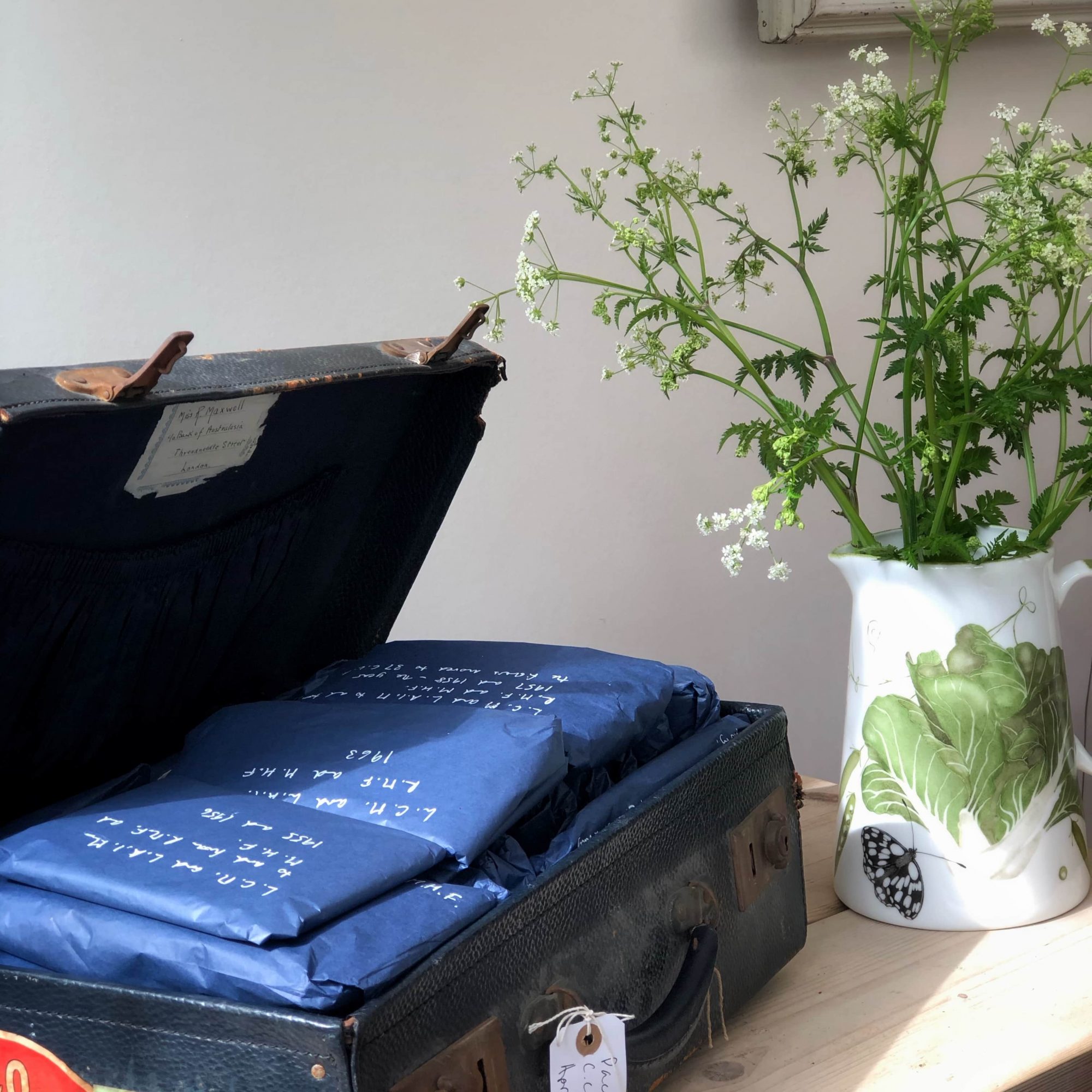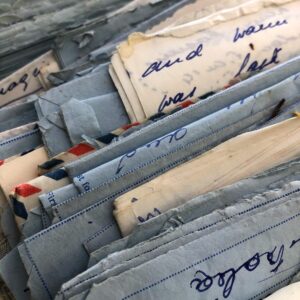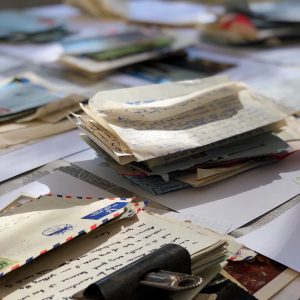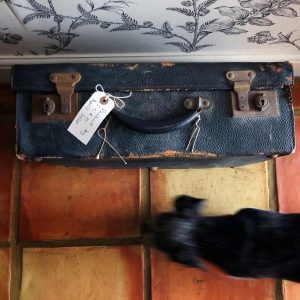
During the Coronavirus lockdown Caroline sorted decades of letters between her grandparents and her parents. A collection of family letters and papers is a unique treasure trove of history, memories and discoveries waiting to be made. Sorting through them is an adventure with laughter, tears and surprises that you’ll never forget. Here is the Good Sorts Guide she’s written.
- If the letters are damp spread them out in a single layer on acid-free paper or an old sheet and let them dry gently away from direct heat or sun. Rest books on their spine and fan the pages out.
- You can remove anything that may cause damage like rusty clips or old sticky tape but, unless the documents are very precious, they add to the sense of history – of connection with past hands on the document.
- Always keep letters with their envelopes.

- Decide how you’ll want to read the letters in the future by asking yourself Who / What / When questions. Will you group all the correspondence between two people, everything related to a important event or a single year?
- When you’ve listed your groups, clear a big space and put down markers naming each group – in the photo you can see the sheets of A4 card I used – then start sorting into the groups.
- If your groups get very large you may need to subdivide them – correspondence between two people divided into years for example.

- When you’ve finished, decide how to keep papers in their groups. Will you do the classic bundle of love letters tied with a vintage silk ribbon or simple coloured string with manila labels or little tissue paper packets with notes written on the outside? There are so many different ways, just steer clear of plastic.
- Remember this isn’t the same as organising bank statements or tax information so don’t make it too clinical for the next generation delving into the past. Give them some fun and surprises. Leave all the little pieces of ephemera like an old railway ticket or powder puff and add your own, including a note about when and where you sorted the letters.
- Keep letters in the original old box or case if you can. It always adds to the excitement and connection with the past.
- If you can’t use original boxes and have to buy new ones, there are lots to choose from. There are specialist conservation suppliers like Preservation Equipment. If you want something less utilitarian, Bigso are great because you can colour-code them and they are scaled so you can stack different sizes neatly. They’re available from The Holding Company. Top of my wish list are the beautiful handmade ones from Cambridge Imprint.
- Whatever style of box you choose, if you’ll be opening the box often, a separate or fold back lid is best. And remember to measure the space where you’re going to store them before you buy. It’s rather annoying to find that your beautiful new boxes won’t fit!
- Label the boxes on the sides as well as the top.
- Store them somewhere dry without wide temperature fluctuations and pests. Garages, outbuildings, attics and cellars aren’t a good idea.

You’ve probably realised I haven’t said anything about reading the letters. Unless you’ve got hours, days, weeks – months, even – don’t start reading when you’re sorting the letters. It’s a rabbit hole you may never find your way out of! Read them a group a time, share what you’re reading with family and friends and, if there’s only one person left who knows the answers to questions you want to ask, don’t delay for a second. Pick up the phone.
And one last thing, if you stop for a cup of coffee or tea or something stronger, don’t put it on the table with your precious letters!




